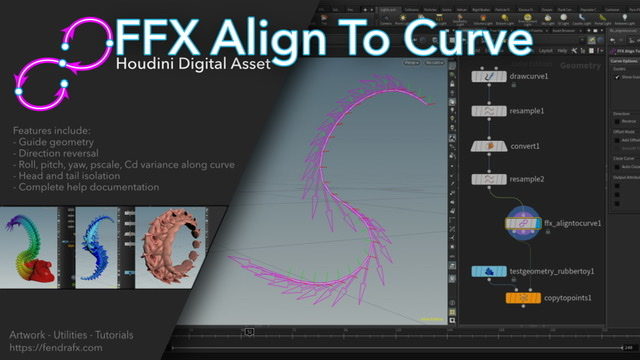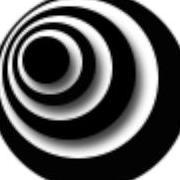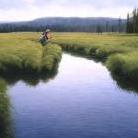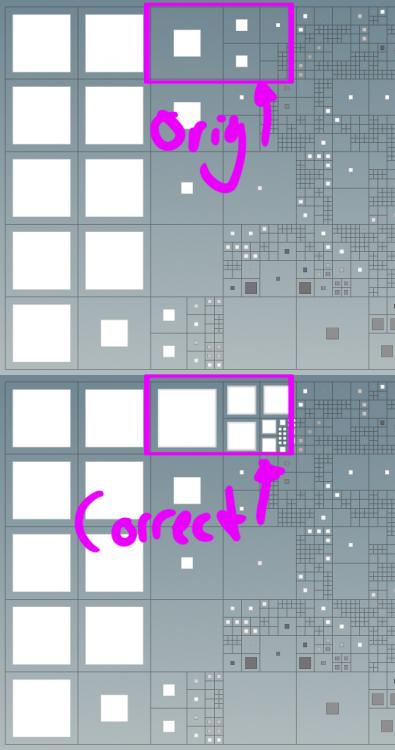Search the Community
Showing results for tags 'pscale'.
-
Hey everyone, I want to scatter points on a surface while dynamically adjusting their distances based on the "pscale" attribute. When I change the "pscale" value, the spacing between points should automatically update to reflect the new scale. Any suggestions on how to achieve this? Thanks for helping. Points Pscale.hip
-
Hi everyone, I tried animating the "pscale" attribute for each grain in a Vellum grains simulation, but it didn’t work as expected. I’ve attached my scene file, and I’d appreciate any ideas or suggestions you might have. Thanks in advance for your help! Grain_01.hip
-
Let's assume a case scenario which counts many many high res solid objects, like rocks or fractured pieces. I can generate proxies and simulate those RBD pieces, then export the sim infos as points. In the end I use transform pieces to bring the original high res objects to the simmed ones. All good if this is performed in SOP, while I am struggling to bring the same aspect in LOP. To set a collection and a Prototype index attribute may help to sort the "variant" (as in copy to points) but Scale and Orient seem to go on their own accord. I do know there is an option to "Create Point Instancer" for packed primitives on SopImport, but don't really understand what it does under the hood. The hierarchy is different from a standard instancer. Also i cannot judge if the performance is as good as the standard instancer. Attaching the ref file below, if someone has good advice. Thanks! LOPinstancePieces01.hiplc
-
- rbd
- copytopoints
-
(and 8 more)
Tagged with:
-
Hi guys, I'm trying to get bubbles to collide with each other but can't seem to find the solution yet. I'm using points that are emitted upwards and assign a random pscale value to each new point. I'd like points to change colors when they are too close to each other, that way I can check if the setup works. So when 2 points are close to each I'd like to check if the distance between them is not smaller than the radius of the point and the radius of the closest point. If it is, then the points need to turn red. For now, all my points turn red, but I think it's because I can't find a way to access the closest's point pscale value to compare it with the distance. Can someone guide me on how to approach this kind of issue? I tried to use pcfind but that doesn't seem to work too . Bubbles_WIP.hipnc
-
Hi guys In a fluid simulation, I would like to create soap foam (as you can see in the reference image below). I don't know if it's the right workflow, but I tried to apply a random "pscale" attribute to the particles, and the result was not what I needed. (I don't want to use the Vellum, because I would like to use this part of a fluid sim, later). How can I fix it? I would appreciate any ideas. Fluid_Random PScale_01.hip
-
Hi everyone, Kind of a simple question but can't quite figure it out. I scattered some points and copied cubes on them, randomized attributes including pscale I am getting a nice exponential falloff on pscale which is what I want, but its in reverse. I want it to start big at the bottom and gradually taper off to nothing at the top. Basically the exact opposite of what Im getting now (see screenshot). Any idea how I reverse the direction the exponential falloff is happening? Thanks! Matrix_Panel_Updated.hiplc
- 2 replies
-
- exponential
- pscale
-
(and 2 more)
Tagged with:
-
Being quite new to Houdini and VERY new and completely out of my depth in VEX I have a problem which should be simple for anyone who is smart. So the setup is I have some popgrains spawning on an object that scale from 0.001 up to 0.025 using some VEX and then having those grains stick to the surface of the context geometry. Using the following code... @pscale += 0.001; @pscale = clamp(@pscale, 0, 0.025)*1.5; int pr; vector uv; float d = xyzdist(1,@P,pr,uv); @P = primuv(1,'P',pr,uv); This works fine and spawns particles that grow to all be a uniform size. My question is. What do I add or how do I change that code to add some randomness to the size that the grains scale up to. I have tried to wrap my head around the "rand" function inside the clamp function but ended up making everything explode into giant grains. I KNOW there is a simple solution to this but not having the brain for code just yet out of pure ignorance I don't know what to do. Could anyone help possibly? ALSO as a bonus for anyone who is super genius. Is there a way to define a determined number of sizes the pscale of grains can be? For example have 5 different sizes that a grain can be based on a seed or even better a probability so I can control how many of each sized grain could show up at spawn? ALSO ALSO if you could help me with this, Can I use VEX to assign Cd values to each size clone to have the ability to have different materials on different grains based upon their size. It seems like I'm asking a lot but I'm sure someone here is thinking "Pftt this is just 3 lines of code." And could help me work it out.
-
@pscale=@nage*0.1; i want exact opposite of this. particles should start big and according to there age they should be disappear.
-
Hey all, I'm trying to get a sin wave to vary the size of pscale driven geometry through vex over time. I can get it to affect the scale initially but it doesn't fluctuate it over time. Anyone want to have a look and see what I'm doing wrong here? pscale_sin.hip
-
FFX Align To Curve HDA FFX Align To Curve brings a faster system for customizing orientation of geometry along the length of a curve. Working with point data directly, a user is easlily able to develop in realtime their desired orientation data. A clear adjustable guide system shows exactly which direction your geometry will orient towards once copied onto the processed points. Scaleable arrows reveal the primary tangentu orientation and travel direction along the curve. Auxillary normal and bitangent markers reveal the other axis orientations. Features include: - Guide scaling, opacity, and color. - Offset parameter to slide points along curve. - Reversible orientation direction - Roll, Pitch, and Yaw controls that can be varied over the length of curve. - Pscale (scale) point attribute that can be randomized and varied over the length of curve. - Cd (color) point attribute that can be varied over the length of curve. - Separate head and tail point breakout to allow for unique geometry from the main curve. - Plus other adjustment, and output options. Video Tutorial: https://vimeo.com/478682335 For more information please visit https://fendrafx.com
-
- 1
-

-
- guidegeo
- orientation
- (and 24 more)
-
Hey fellow Houdini artists! I'm a long time Max and Maya user and I'm now learning Houdini. I'm trying to figure out if there is a way to use heightfield paint or heightfield draw mask to store values that I can later use to affect the pscale of objects in a heightfield scatter. For example I'd like to scatter bushes on a landscape. I want each point to get a random pscale factor still...Like between 0.5 and 1.5. However, I then want to multiply that value by another masks value that I can paint. This way I could increase or decrease the general size of the pscale in the areas I've painted. This would allow me to create taller bushes in some areas or smaller bushes in other areas. This seems fairly straight forward to do with scatter, copy to points and attribute paint nodes if I'm not using heightfields. However, I'd like to do this with heightfields and heightfield scatters Is something like this possible? Thanks, Tim J
- 1 reply
-
- pscale
- heightfield
-
(and 1 more)
Tagged with:
-
as you can see the code below: i[]@values = findattribval(0,"point","random_number",3); for(int i = 0 ; i < len(@values) ; i++) { if(@ptnum == @values[i]) { @pscale = ch('specific_pscale'); } else { if(@ptnum != @values[i]) @pscale = ch('rest'); } } the second if inside the else doesn't work properly. Specific_pscale.hip
- 5 replies
-
- findattributevalue
- attribute
- (and 5 more)
-
Does anyone know if it's possible to use @pscale for vellum grain? I mean to create it on "Grain Source" and pass it to a "Vellum Configure Grain". To a "grain size" probably? Thanks. BK
-
Hey there! I'm quite new in Houdini. I do not really like to ask questions, I rather tend to find answers by myself. But sometimes I hit the wall. This is the case I need your help guys. Im trying to make RBD sim in DOP NET with the simple spheres. My goal is to have variable scale and color of a sphere according to the noise. I manage to get color with POINT VOP in SOP SOLVER with MULTI SOLVER. But I stuck with the scale of a spheres. They inherit pscale from a GEO level. I would like to use pscale in DOP NET and manipulate it with the POINT VOP. Any ideas how to achieve it? I tried to make it with the particles, like in this tutorial https://www.youtube.com/watch?v=qXoSEnh94YQ&t=246s But particles tend to move erratically and not act like proper RBD. Balls on plane.hipnc
-
If i have 5 points all at the origin each with i different pscale, how can i move them apart along the x axis so that when I copy spheres to them the spheres will touch but not intersect? thanks in advance.
-
I'm exporting some particles from Houdini via alembic (importing via exocortex crate), but how do I control the size of the particles when rendered (rendering in Arnold)? I tried setting pscale and radiusPP (on points and verts) in Houdini but nothing seems to work. And thinking about it I guess I would need to get opacity per particle exported too.. Or I could re-map these based on age in Maya.. Has anyone done this before?
-
Is there a workflow to export particle animation to Alembic with a pscale included in the file?
-
Hey, I have a very frustrating issue. I have an alembic that I have scattered points onto and managed to get them to stick in place. The problem is now the random values I have assigned to these points i.e pscale, change every frame. Does anyone have an idea how resolve this, please? Thanks Andy
-
Hi, magicians! I already broke my mind trying to solve a simple problem) I created a point infection system and for every point I copy the geometry so I want geometry to grow from every new point. It seems that I need to associate the pscale attribute with the time attribute, but the pscale grows constantly in time which is logical. In addition, all new points grow from the existing @Time value associated with the @pscale. So how can I make growing @pscale in every new point from zero and stop after few frame/time with little random pscale? Or I think it’s wrong and I need to change the approach. Maybe try to animate the uniformscale in the geometry itself through some expression? I would be grateful for any advice
-
Greetings, I made a set of lines, assigned a random pscale attribute to points on one side of the lines. I copied spheres to the points, then I promoted pscale to the lines as a new attribute, then used that attribute to drive carve_SOP. But when I modify the attribute driving carve it modifies not only carve(first U) but the scale of these spheres as well. carve_q.hipnc
-
Hi everyone! First post here! I hope you can help me. I'm doing some bubbles emission simulation, and I'm just starting this setup. I want to know if there is a way to control the gravity force (or any force that could work) by the pscale or Cd attribute from the input points in the source. I want the smaller bubbles to stay low or even go slowly down and the big ones to go up. I'll post the hip file too. Sorry for the english, I'm kind of rusty... bubbles.hipnc
-

Drive pscale with area/perimter of a primative?
borbs727 posted a topic in General Houdini Questions
I did Entagma's tutorial on quadtrees and I want to take it a step further with my own simple twist. I want to use the area/perimeter/whatever of each quad to spawn points' and drive their respective pscale attributes. So smaller faces will generate smaller cubes (see image below). I'm able to generate points, but can't correctly drive the pscale attribute. I've tried using area and perimeter in the measure SOP. What am I missing? Hip attached: forums_area_to_pscale.hiplc The top image is what I'm currently getting, and the bottom is what I'd like to get (not just within the pink rectangle, but in the entire object): Thanks! -
Recently I started learning VEX, but now and then I hit a wall. In this case I can't find the answer on my own. What I'm trying so solve here, is to read the pscale from the closest point. //PSCALE @pscale = random(@P);; //NEARPOINT string me = itoa(@ptnum); i@near = nearpoint(0,'!'+me,@P); //READ PSCALE FROM NEARPOINT @npt_pscale = point(0, "pscale",@near); Getting an attribute with the point function works fine in most cases, like with the @P or @Cd, but with pscale it gives me a value of 0.0. Not sure I this is the best method, or maybe I'm overlooked something. I really can use some help. nearpoint_pscale.hip
-
For example, if I was creating debris emission for a destruction scene and I wanted the debris to vary in size, how would I go about creating a ramp that would affect my original points and allow control over the scale of my debris geometry and the ratio of larger vs smaller geometry to be used? Any suggestions would be much appreciated. Thank.
-
Hi Odforce! Im working on a little project using the object packing technique from Ben Watts Design's tutorial. I've got an attribute VOP using turbulent noise to drive the pscale attribute. Im then reading this into a popnet through a sop solver, but when the particles move they adopt the pscale of the underlying position of the noise. I believe this issue is related to the sop solver reading the new pscale in every frame but im unsure how to essentially freeze this attribute. I want the points to be born, adopt the pscale based on the location it spawns on, then for the pscale attribute to remain frozen for the rest of the simulation, how do i go about setting this up? I have attached the scene file here. CardGrowth.hip
- 1 reply
-
- freezing
- attributes
-
(and 2 more)
Tagged with:


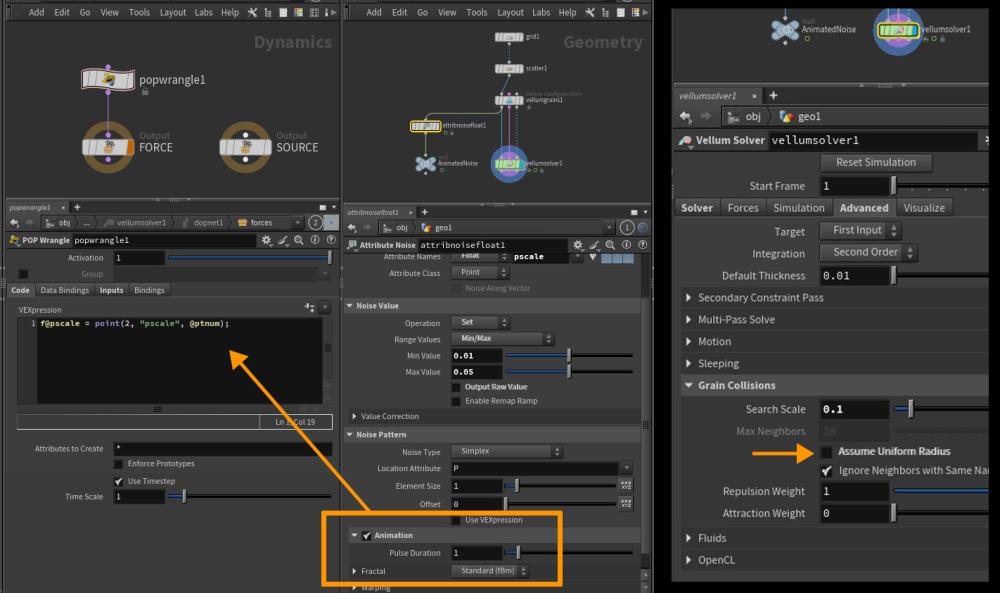
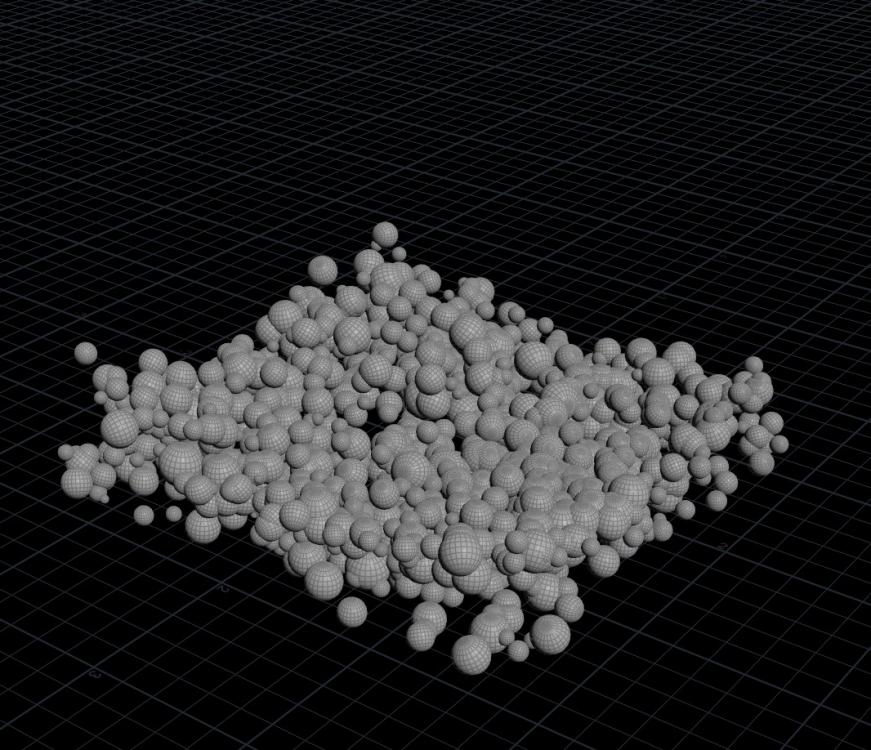
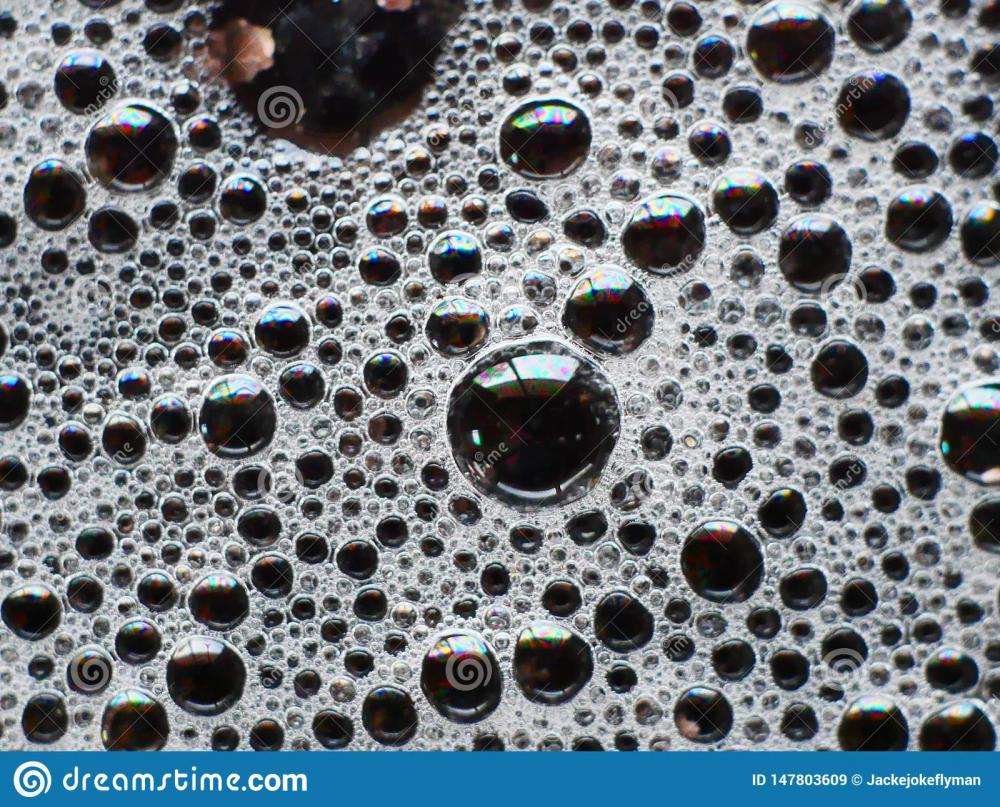
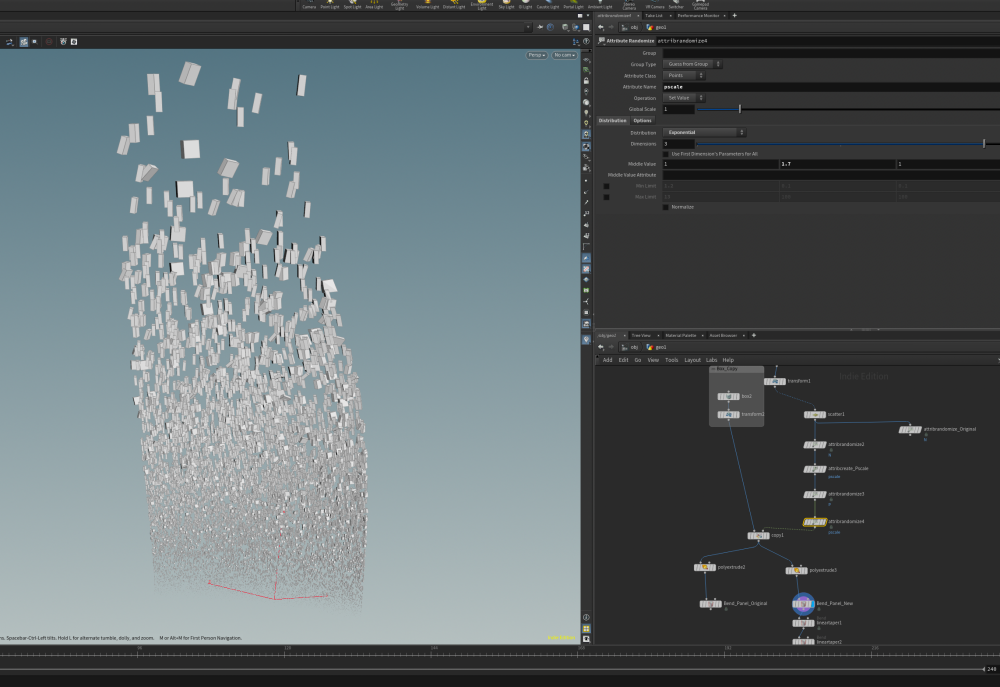
.thumb.png.a379fcce7c1429d1c20ebf7f1b15c71a.png)

